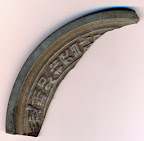  International Collaboration International Collaboration
2013
The museum participated with two objects - a porcelain cup and a mirror fragment, China, 13th-14th centuries at the international exhibition China's Treasuries, which was organized by the National Museum of History of Romania in collaboration with the Center of Heritage Exchange from the People's Republic of China in the period of April 29th - September 30th 2013 in Bucharest (Romania).
Natalia Mateevici, scientific researcher-coordinator, participated in the period June 25th-July 25th, 2013 at the international Ukrainian-German archaeological excavation camp Kosary -2013.
Natalia Mateevici, scientific researcher-coordinator, participated in the period August 5th-August 30th, 2013 at the international Romanian-Italian archaeological excavation camp from Ibida (Slava Rusă, Romania).
On August 10th-17th, 2013 Lucia Marinescu-Tonu, scientific researcher, and Elena Ploșnița, scientific secretary, participated at the works of the 23rd General Conference of the International Council of Museums (ICOM) with the theme „Museums - memory and creativity - social changes" which took place in Rio de Janeiro, Brazil.
On August 19th-24th, 2013 Lucia Marinescu-Tonu, researcher in the Medieval History and Numismatics Sector, had a documentation internship at one of the most important centers of museology from Brazil - Museum of Astronomy and Connected Sciences (Rio de Janeiro).
Livia Sârbu and Mariana Sârbu benefited in the period between October 14th and 23rd from the course of professional training „Immobile heritage project management" organized by the National Museum of Eastern Carpathians, Sfântul Gheorghe, and the Center of Professional Training in Culture, Bucharest, Romania
|











 31 August 1989 St., 121 A, MD 2012, Chisinau, Republic of Moldova
31 August 1989 St., 121 A, MD 2012, Chisinau, Republic of Moldova


















































